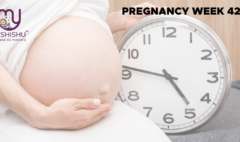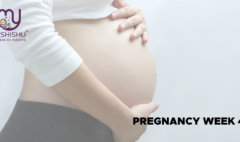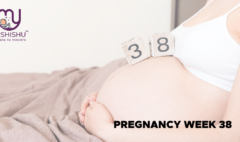Cholestasis Of Pregnancy: Symptoms, Treatment & Prevention
Cholestasis Of Pregnancy: Symptoms, Treatment & Prevention
Cholestasis of pregnancy (also referred to as Obstetric Cholestasis) is an illness of the liver which most frequently impacts expecting mothers in their third trimester, most often in relation to an inability of bile to flow freely and result in increased levels of bile acid within bloodstream resulting from inability of bile production; understanding its signs and ramifications are critical in protecting both mother and fetus’ well-being.
We will delve into all complexities related to Cholestasis pregnancy while providing pregnant women with information that will enable them to navigate their health journey confidently!
What is Cholestasis of Pregnancy?
Cholestasis of pregnancy (or obstetric cholestasis) is a liver disorder unique to pregnancy that reduces bile flow during gestation. This typically manifests itself during the later stages of gestation, particularly the third trimester. Cholestasis of pregnancy manifests itself with symptoms including intense itching on the palms and soles.
Hormonal fluctuations during gestation that alter bile production and flow are likely responsible for this condition. Cholestasis of pregnancy occurs due to decreased bile flow leading to an accumulation of bile acids in the bloodstream, creating symptoms.
Early detection and management are critical as cholestasis poses risks both to mom and fetus alike; understanding its nature helps pregnant individuals and healthcare providers intervene quickly to minimize potential complications and risks.
What happens if I have cholestasis while pregnant?
Cholestasis of pregnancy can result in serious risks for both you and your unborn baby, including preterm birth and subsequent respiratory distress, low birth weight for newborns, meconium staining, increased risks of stillbirth, intense itching fatigue, and liver complications for mothers if left unchecked during gestation, as well as a possible stillbirth risk for all involved parties.
Therefore, it’s critical that medical advice be sought immediately should there be suspicion of cholestasis during gestation to ensure effective management and mitigate risks as soon as possible so as not to increase risks to avoid or minimize risks during gestation.

How common is cholestasis of pregnancy
Cholestasis of pregnancy affects approximately one out of every 1000 pregnancies and, although its incidence rate may seem relatively low, still warrants medical intervention as early as possible to ensure appropriate management and limit risks to both mother and baby. It’s essential that symptoms of cholestasis be recognized quickly so medical assistance may be sought to mitigate potential risks to both.
What does cholestasis of pregnancy feel like
Cholestasis of pregnancy manifests itself with intense itching on the palms and soles that often worsens during the night, significantly disrupting daily life and leading to fatigue, dark urine, disturbed sleep patterns, distress, or worse. Early identification is crucial in seeking medical assistance to alleviate discomfort as well as reduce risks to both mother and baby during their gestation.
Symptoms and Causes
What is the main cause of cholestasis of pregnancy?
Cholestasis of pregnancy is typically brought on by hormonal shifts that arise during gestation. These hormonal fluctuations affect liver functioning, leading to decreased bile production. Bile acids accumulate in the bloodstream and cause itching and discomfort for pregnant mothers and babies alike.
Genetic predisposition or liver conditions may also play a part in its onset; understanding their impact upon the production of bile is critical in diagnosing and managing this condition effectively during gestation to ensure both mother and child health is preserved during this crucial gestation period.
What are the symptoms of cholestasis of pregnancy?
Cholestasis of pregnancy is often marked by intense itching in the palms and soles that worsens at night, along with dark urine, jaundice (yellowing of the skin and eyes), fatigue, decreased appetite, and dark urine production. Additional symptoms may include dark urine color, jaundice-yellowing skin or eye yellowing, fatigue, and decreased appetite.
The itching can become severe enough to disrupt sleep or daily activities and cause distress; therefore, early recognition and treatment for cholestasis should be sought quickly to protect both the mother’s and baby’s wellbeing! Cholestasis poses risks for both mothers- and -babies; therefore, early recognition and appropriate treatments are necessary to ensure their well-being.
Less common signs of cholestasis may include:
- Light-colored stools
- Nauses and vomiting
- Upper abdominal pain or discomfort
- Loss of appetite
- Unexplained fatigue
- Elevated live enzymes
- Right upper quadrant tenderness
- Darkening of the skin in certain areas such as armpits and neck
- Jaundice
- Frequent urinary tract infections (UTI’s)
What week does cholestais of pregnancy start
Cholestasis of pregnancy typically appears during the third trimester, typically weeks 28–34 of gestation, although symptoms could appear earlier or later than this point in gestation. Therefore, pregnant individuals need to remain alert to possible signs and seek medical assistance right away if they suspect cholestasis symptoms.

Why does jaundice occur in some cases?
Jaundice occurs during pregnancies and is characterized by cholestasis due to bile acid buildup in the bloodstream, often from liver failure. Excess bile acids cause yellowing of the skin and eyes that is characteristic of jaundice; when this happens, it prevents proper liver processing and excretion, thus leading to its accumulation in body systems like jaundice.
Prompt recognition and management of cholestasis is necessary to effectively address jaundice symptoms while protecting both the mother and the developing baby from further complications during the gestation and birthing processes.
Diagnosis and Tests
How is cholestasis diagnosed?
Cholestasis of pregnancy can be diagnosed through an evaluation of the medical history, a physical examination, and laboratory tests.
Healthcare providers usually start by reviewing symptoms reported by their patients, such as intense itching, dark urine production, or jaundice symptoms reported during gestation; during examination, signs such as jaundice or tenderness in the upper right quadrant may appear.
Laboratory tests play an indispensable part in diagnosing liver conditions. Blood tests, including liver function tests and bile acid level assessments, are commonly employed to measure liver health and detect abnormalities that indicate cholestasis; elevated levels of bile acids or liver enzymes found in the bloodstream point to impairment in its functionality.
Additionally, imaging tests like ultrasound may be performed to examine the liver and bile ducts as a means to rule out other liver conditions, while fetal monitoring may also be required to assess baby well-being.
Given that cholestasis can pose a risk to its wellbeing, early and accurate diagnosis is key to initiating suitable management and mitigating complications associated with pregnancy cholestasis.
Tests that will be performed
Tests available to identify pregnancy cholestasis include:
- Blood tests, such as liver function tests and measuring bile acid levels.
- Liver function tests: assessing enzymes such as Alanine Aminotransferase (ALT) and Aspartate Aminotransferase (AST).
- Bile acid levels: Rising levels indicate impaired bile flow.
- Imaging tests: Ultrasound can provide valuable information regarding liver and bile duct functions.
- Fetal monitoring: to evaluate the overall wellbeing of a newborn and identify any complications due to cholestasis.
Management and Treatment
How is cholestasis of pregnancy managed or treated?
Cholestasis of pregnancy can be managed through medical intervention and close monitoring by healthcare providers, who may prescribe antihistamine creams such as ursodeoxycholic acid (UDCA) to lower bile acid levels and alleviate itching, in conjunction with regular monitoring of liver function and bile acid levels.
Early delivery may even be advised in severe cases to mitigate risks to both mother and baby. Overall, prompt recognition and proactive management are key in order to protect pregnant individuals with cholestasis during gestation.
Treatments to manage the symptoms of cholestasis of pregnancy include:
- Ursodeoxycholic Acid (UDCA): Prescribed to reduce bile acid levels and relieve itching, ursodeoxycholic acid is intended to relieve both conditions simultaneously.
- Topical treatments: Creams or lotions that contain antihistamines can provide temporary relief from skin itching.
- Monitor: To assess liver function and bile acid levels regularly to monitor the progression of liver conditions.
- Fetal Monitoring: Ensuring the health and welfare of a developing baby through regular monitoring.
- Early Delivery: For severe cases, early delivery may be recommended to reduce risks to both mother and baby.
If the initial treatments for cholestasis during pregnancy fail to sufficiently ease symptoms, healthcare providers may pursue alternative solutions. This might involve altering dosage or type of medications—for instance, trying different formulations of Ursodeoxycholic Acid (UDCA), exploring additional medication to manage itching, or monitoring liver function and bile acid levels closely so as to identify progression and timely intervention measures.
Should symptoms persist or worsen despite treatment approaches, healthcare providers may consider more aggressive approaches, such as early delivery, in order to protect both mother and baby from potential risks associated with treatment options.
What complications are associated
Cholestasis during pregnancy can result in various complications for both the mother and the baby. Pregnant individuals suffering from cholestasis face an increased risk of preterm birth, which could cause respiratory distress and low birth weight in their babies, with complications including respiratory distress as well as meconium staining that increases stillbirth risk and meconium staining that puts an individual at an increased risk.
Furthermore, itching, fatigue, and liver complications could arise for pregnant mothers themselves during cholestasis gestation; thus, prompt recognition and proper management are imperative to ensuring both parties’ wellbeing during gestation.
Cholestasis during pregnancy has been linked with an increased risk of gestational diabetes and preeclampsia. Early identification and management can reduce associated complications significantly.
Fetal complications related to cholestasis of pregnancy include:
- Preterm birth
- Fetal distress
- Meconium staining
- Stillbirth
Can you have a healthy baby with cholestasis of pregnancy?
Yes, with proper management, the cholestasis of pregnancy is manageable, and you can still have a healthy baby. Close monitoring and timely interventions may reduce risks related to preterm birth, fetal distress, and other complications for mother and baby alike, creating positive results.

What foods should I avoid if I have cholestasis in pregnancy?
If you have cholestasis during gestation, it’s advisable to limit your intake of high-fat and spicy foods, which could worsen symptoms; limit processed foods, caffeine, and alcohol, as these substances strain the liver; and aim for a diet rich in fruits, vegetables, whole grains, and lean proteins, as these will all support liver function as well as overall well-being.
Prevention
Can cholestasis of pregnancy be prevented?
Cholestasis during pregnancy cannot be completely avoided, but certain lifestyle adjustments, such as maintaining a healthy weight and managing conditions like diabetes, may reduce its risks. Early detection and proper management are vital in order to minimize complications during gestation.

Want to know more
Explore our courses
What are the risk factors
Risk factors for cholestasis of pregnancy include:
- Previous history of cholestasis
- Family member with a condition
- Multiple pregnancies
- History of liver diseases or gallbladder problem or hepatits C
- Pre-existing conditions such as diabetes or auto-immune diseases
- Being over-weight or obese
Living With
What is the outlook of people with cholestasis?
Individuals living with cholestasis of pregnancy face different outcomes; however, with proper management and timely intervention, many can experience relief from symptoms and have healthy pregnancies.
When should I call the health care provider
Call your healthcare provider if you experience symptoms of cholestasis during pregnancy, including intense itching, dark urine, or jaundice. Seek medical assistance immediately if any changes arise in fetal movement or you have concerns for its well-being.
Prompt communication between both mother and healthcare provider is critical to early diagnosis and proper management, which could reduce potential complications during gestation for both parties involved. Don’t be shy if any questions or issues arise during your gestation period; contact them!
Frequently asked questions
-
How serious is cholestasis of pregnancy?
Also, cholestasis of pregnancy increases the risk of complications during pregnancy such as preeclampsia and gestational diabetes. In babies, the complications of cholestasis of pregnancy can be severe. They may include: Being born too early, also called preterm birth.
-
What is the main cause of cholestasis?
Among the most common causes of cholestatic liver disease are primary biliary cirrhosis (PBC) and primary sclerosing cholangitis (PSC).
-
Can cholestasis affect my baby?
Although relatively harmless for the expectant mother, ICP poses a significant risk to the unborn child. Preterm birth, meconium excreted in the amniotic fluid, respiratory distress syndrome, foetal distress and abrupt intrauterine foetal death are all risks seen in this disorder.
-
Is normal delivery possible with cholestasis?
They found that among women with Intrahepatic Cholestasis of Pregnancy (ICP), the mortality risk of delivery was lower than that of expectant management at 36 weeks of gestation. There was a stillbirth rate of 0.64% assumed in this study for the women with ICP.
-
Does cholestasis go away after pregnancy?
Cholestatic jaundice of pregnancy is generally a self-limiting condition that occurs in the last trimester and disappears within 1-2 weeks after delivery.
Conclusion
Overall, cholestasis of pregnancy requires proactive recognition and management in order to safeguard both maternal and fetal wellbeing. Understanding its symptoms, causes, and potential complications is crucial to seeking timely medical assistance.
Early diagnosis is especially essential in terms of mitigating risks while optimizing outcomes; intervention early is vital as prompt care may reduce risks considerably and result in healthier babies for mothers carrying this condition, delivering successful pregnancies with less discomfort during gestation; stay vigilant; maintain open dialogues with healthcare providers during your gestation period; and prioritize maternal and fetal health during your gestation!
A Note From MyShsishu
Hey there, mama-to-be! If you’re also expecting, it’s prime time to dive into our pregnancy courses! Get ready to soak up all the tips and tricks for a smooth journey ahead. Reach out at info@myshishu.in or give us a buzz at +91 7987882834 to get started!











